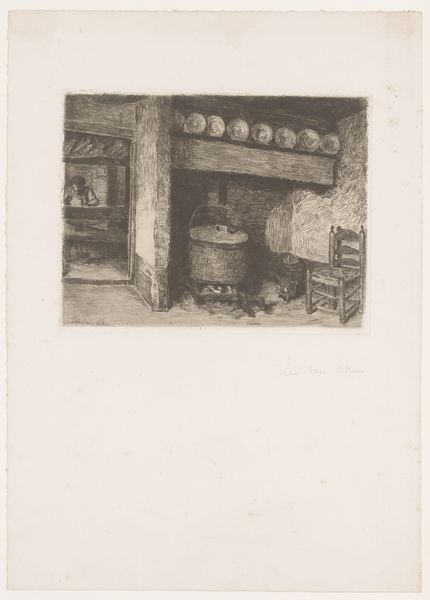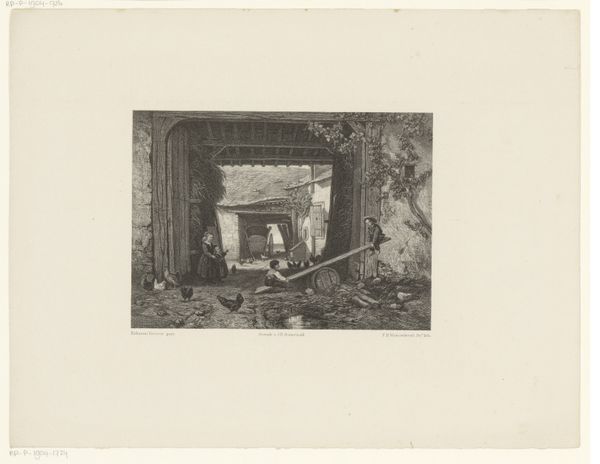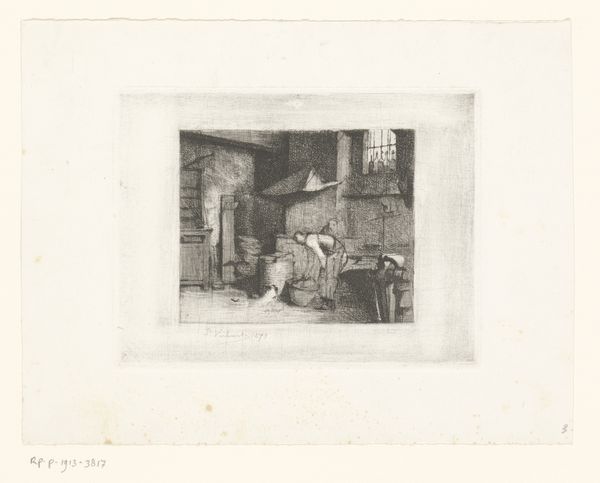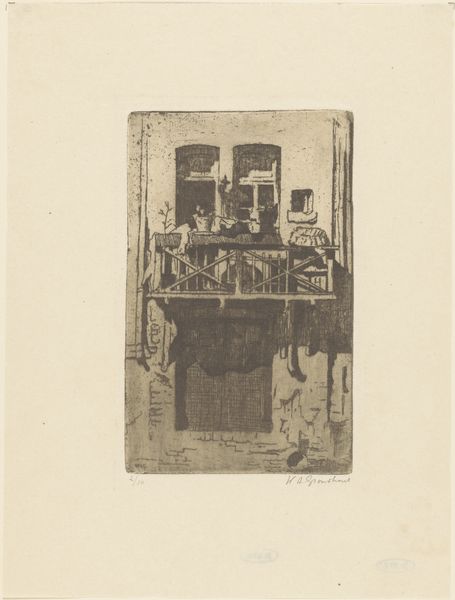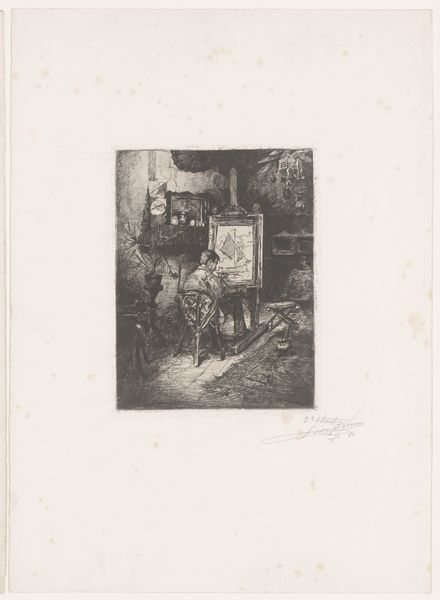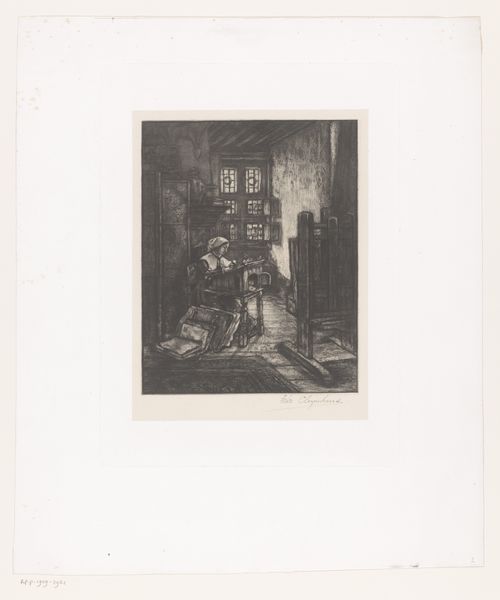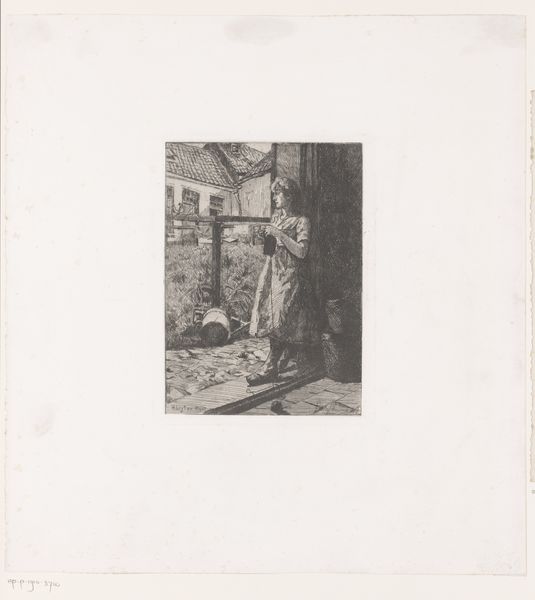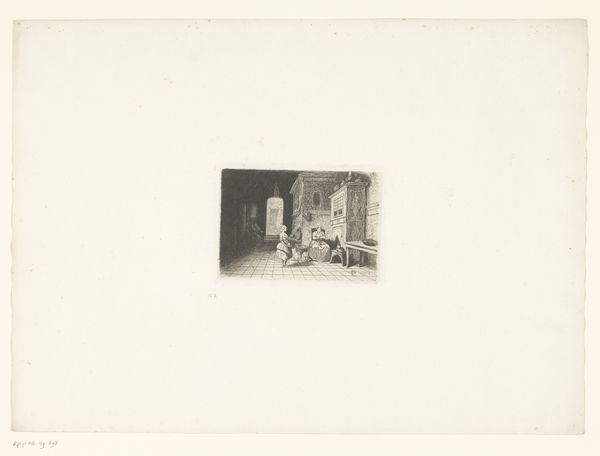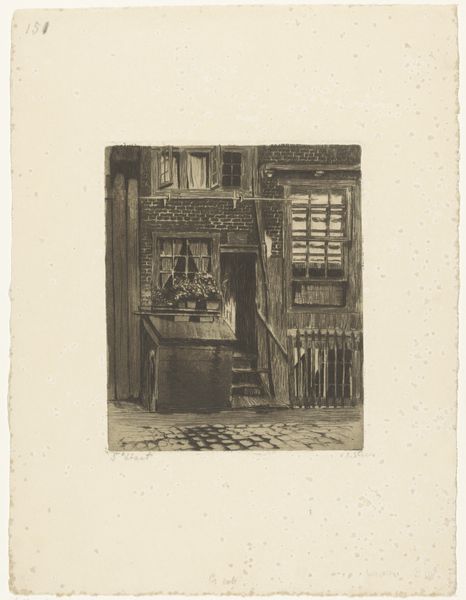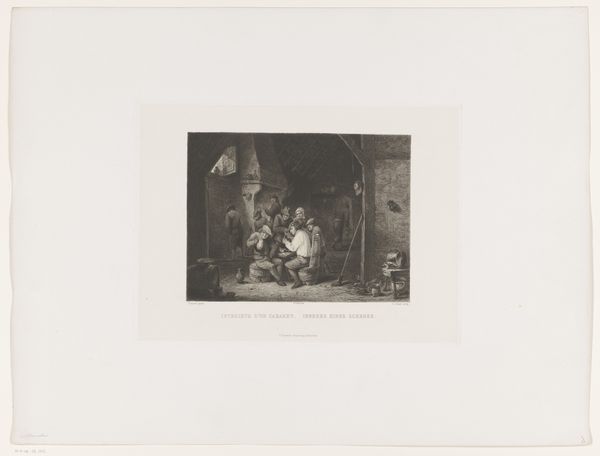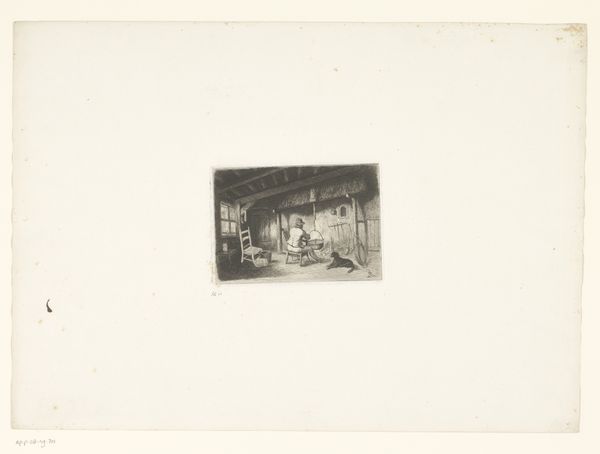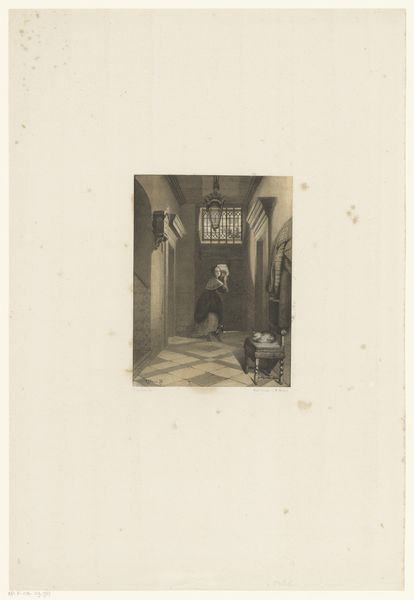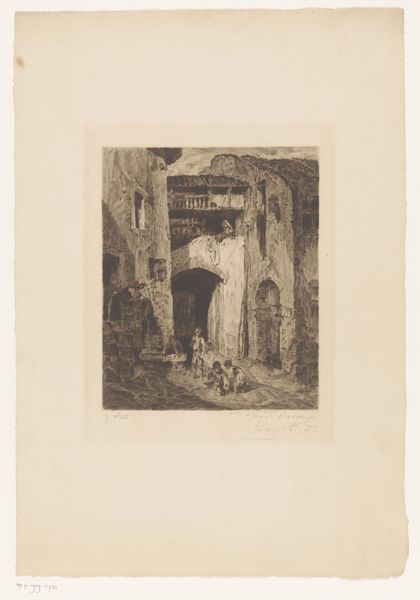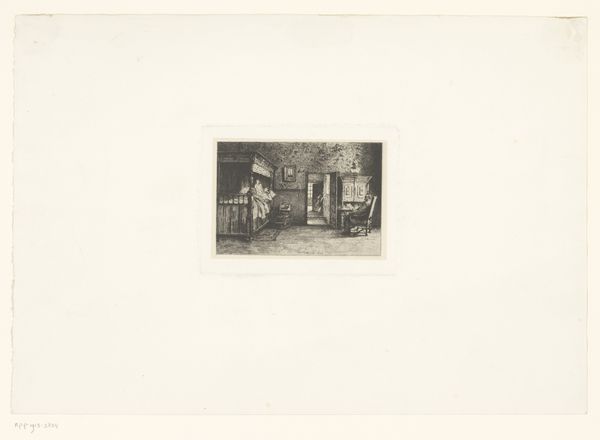
drawing, print, etching, paper, ink
#
drawing
#
ink paper printed
# print
#
etching
#
landscape
#
paper
#
ink
#
genre-painting
#
realism
Dimensions: height 215 mm, width 170 mm
Copyright: Rijks Museum: Open Domain
Curator: Let’s turn our attention to Emile Puttaert’s etching from 1874, titled "Mice in an Interior." Editor: The mood is undeniably unsettling, a sort of claustrophobic tension heightened by the darkness. It’s not the scene you’d expect. Curator: Not quite charming, is it? But consider the material and the method: an etching, multiple impressions struck from a metal plate, and that multiplies the dissemination. What ideas were being broadcast here, and to whom? Was this accessible art commenting on class tensions in some way? Editor: Absolutely, and on closer inspection, you notice that the fireplace is almost an altar. A framed image hangs above the mantle, guarded by decorative objects, maybe reliquaries. And those aren't just any mice; they are numerous. It’s as though they've overrun not just a space but a symbolic order, too. Curator: Think about what Puttaert would have had to do to achieve this tonal depth. Layer after layer of etching, the time and labour of reproducing a rather... unattractive domestic scene. Consider the marketplace—who purchased images like these, and why? What does their patronage say about shifting tastes? Editor: Fascinating. Beyond just vermin, consider the traditional symbolism. Mice are associated with theft, but also hidden knowledge, nibbling away at the foundations of order, literally and figuratively consuming structures both material and conceptual. The interior itself becomes a psychological space. Curator: And this idea that what might be traditionally conceived of as the detritus of domesticity – a decaying building occupied by pests – becoming the central subject… it throws the existing order into question on several fronts. What does this work propose through subject matter and production? Editor: Exactly. Seeing it that way gives even more weight to the symbolism of this interior. Each little mouse challenging not only wealth but social conventions and ideas of beauty and desirability. Perhaps he is exposing the cracks in bourgeois domestic life? Curator: I agree that thinking about symbolism changes this picture. Thank you for expanding the view from pure material consideration. Editor: A pleasure. It's always insightful to view an artwork through different lenses.
Comments
No comments
Be the first to comment and join the conversation on the ultimate creative platform.
